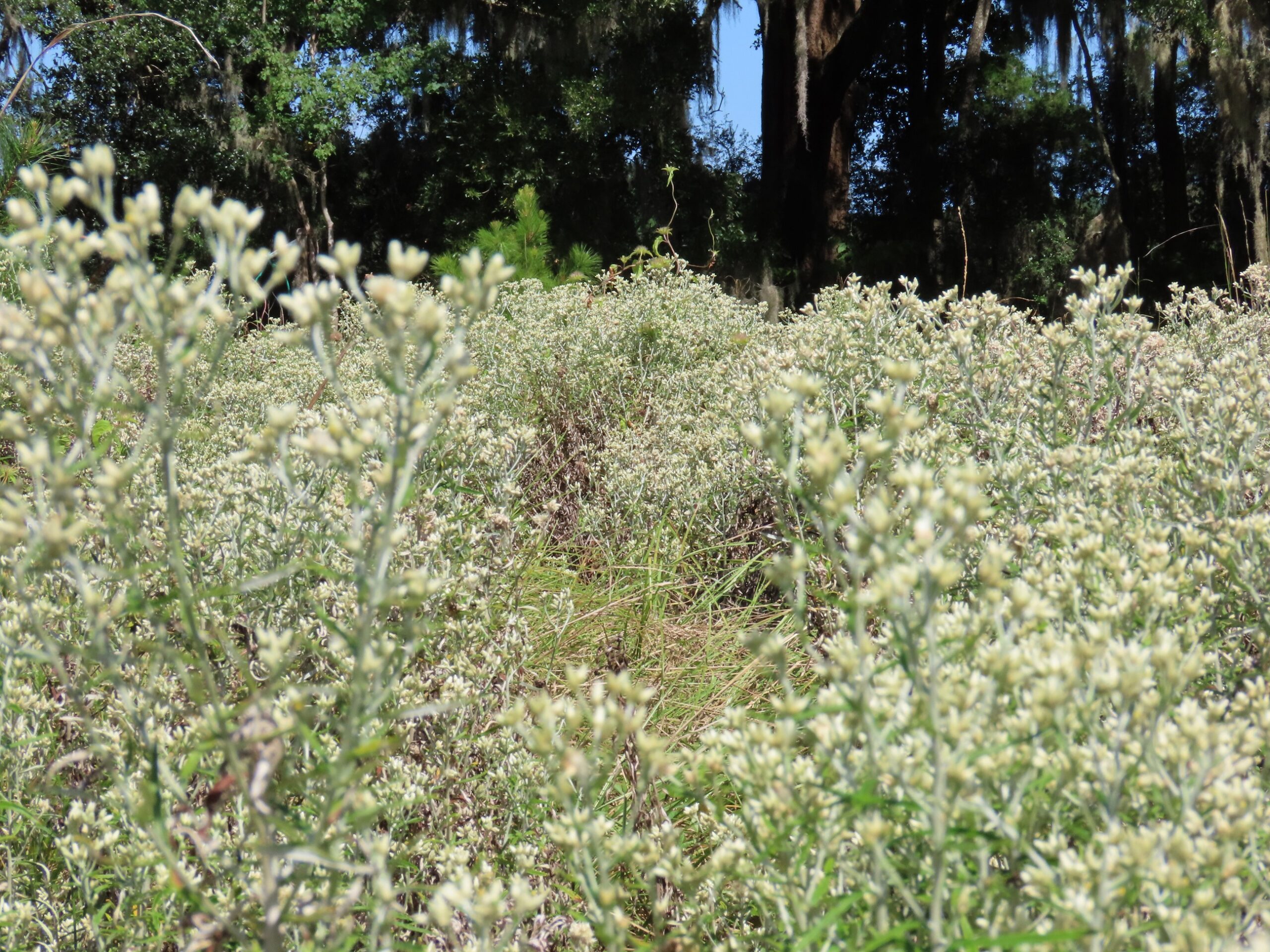
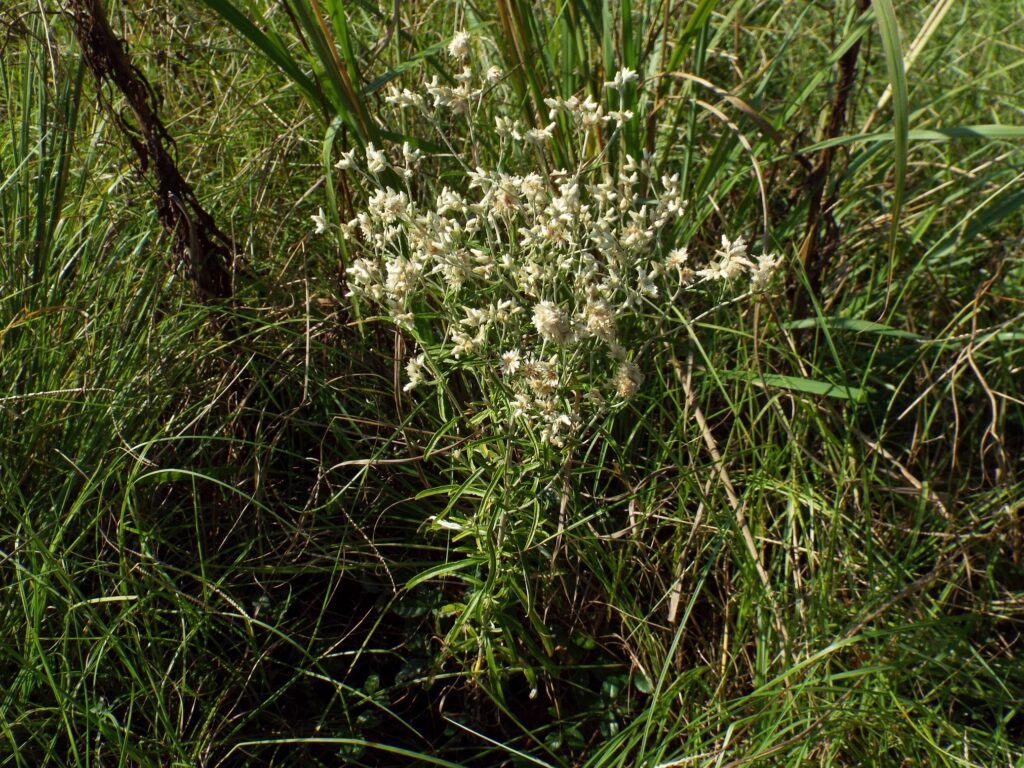
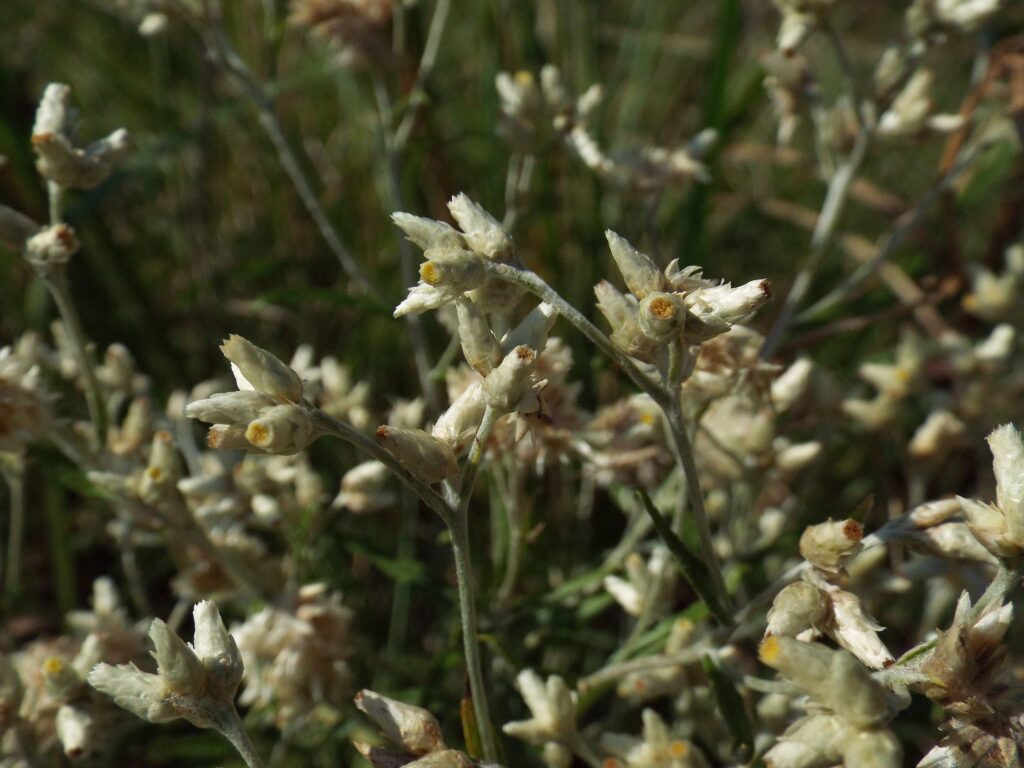
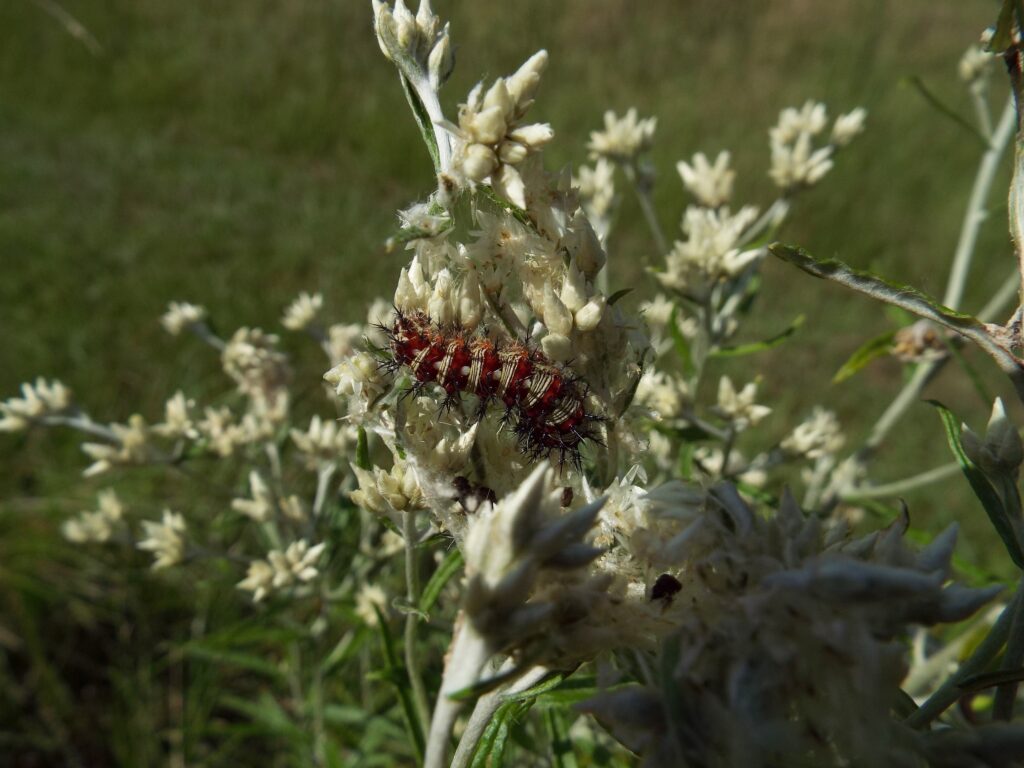
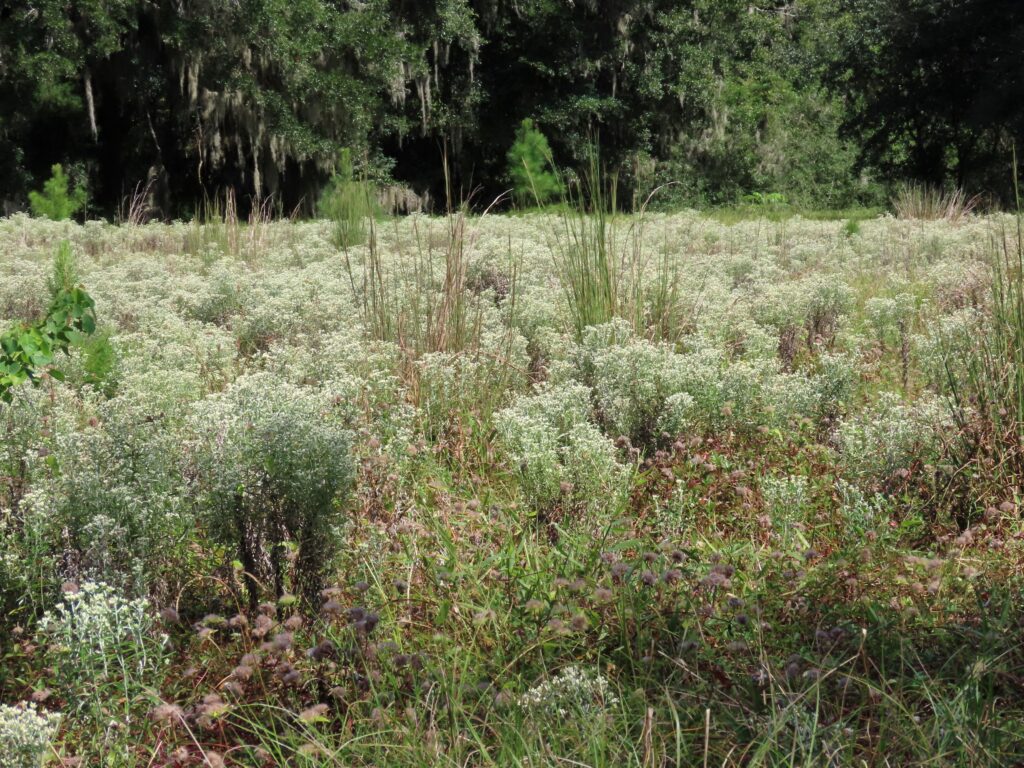
This week for Flora and Fauna Friday we have an inhalable aromatic herb that’s a host for butterflies, Rabbit Tobacco (Pseudognaphalium obtusifolium).
Rabbit Tobacco is a member of the Aster family. It’s found throughout South Carolina and the Eastern United States. It grows in open habitats on a wide array of soils but prefers dirt on the drier, sandier side in fallow hayfields. Rabbit Tobacco is an annual herb but interestingly it overwinters as a seedling to bloom and die in fall. It grows to about knee high on straight stems with foliage that gradually expands in breadth. The foliage of Rabbit Tobacco is lime-green and leathery above but upholstered below in a shimmering down of frosty silk that extends to its limbs and stem. The flowers of Rabbit Tobacco are small, white, and egg-shaped with an almost glowing golden opening at the tip. The flowers themselves are actually assemblages of many tiny flowers packed together. These packages of flowers are grown in clusters of a half dozen or so. Each of these clusters is again grouped into a half-dozen or so at the tip of each stem, and all of those groups are compounded into a collection of every stem and stalk that build into a cloud of flowers. This pale and puffy appearance makes Rabbit Tobacco stand out clearly from your average wildflower, floating like a foam atop the sea of undulating hay submersing a fallow field. The flowers of Rabbit Tobacco provide both nectar and pollen to our smaller native pollinators. They also smell like maple syrup! The scent of pancakes wafting in the breeze is unmistakable where these wildflowers thickly bloom. The flowers eventually mature into a cottony glob of tiny windblown seeds.
Rabbit Tobacco is the host plant for the American Lady butterfly (Vanessa virginiensis). The Lady’s caterpillars feed on the plant by weaving leaves and flowers into a protective shield around itself. These spiky red and white caterpillars can often be found nestled amongst the flowers of Rabbit Tobacco, munching away in their cozy cage.
As the common name alludes, Rabbit Tobacco is also an herb that has historically been smoked or burned as incense by both Native Americans and colonists. The plant indeed has quite a pleasant aroma when fresh, crush, or burned. Yet, the plant has no significant concentration of neurochemicals. It is smoked primarily for the flavor and scent as well as a myriad of purported health benefits. However, there has been no scientific documentation to corroborate any of the plant’s claimed medicinal properties. Most empirical evidence points to it being more harmful than helpful.